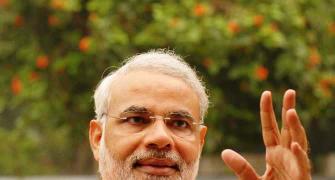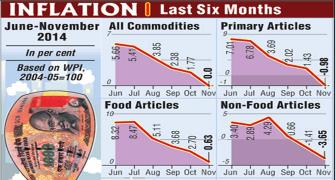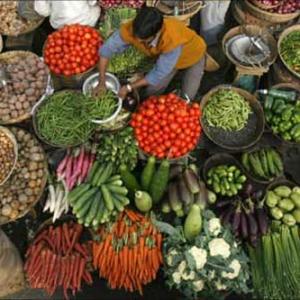 The Consumer Price Index (CPI) numbers published last Friday and the Wholesale Price Index (WPI) numbers released on Monday both point to a rapid decline in the rate of inflation, far faster than anybody could have anticipated.
The Consumer Price Index (CPI) numbers published last Friday and the Wholesale Price Index (WPI) numbers released on Monday both point to a rapid decline in the rate of inflation, far faster than anybody could have anticipated.
CPI inflation was 4.4 per cent in November, far below the 11.2 per cent recorded in November 2013.
While the dramatic decline in crude oil prices clearly played a role, both directly and indirectly, through its impact on input costs, the real story was that of food prices.
Food inflation was 15.4 per cent in November 2013; a year later it was down to 3.1 per cent.
This was largely the result of two significant trends; the rate of increase in cereal prices was down significantly and vegetable prices actually declined by over 10 per cent from the level that prevailed a year ago.
Other food items saw prices increasing, but, with the exception of milk and dairy products, which increased by 10 per cent, the rates of increase were relatively muted. WPI inflation presented an even more dramatic picture.
The inflation rate for November 2014 over a year ago was precisely zero.
One year ago, it was 7.5 per cent. This indicator has been in rapid decline over the past few months, influenced significantly by the fall in oil prices, of course, but also reinforced by trends in food prices.
The fuel and power component of the index declined by 4.9 per cent in November 2014, in contrast to a 11.1 per cent increase a year ago.
On the food front, rice prices increased by 5.6 per cent, compared with a much higher increase of 15 per cent a year ago.
Most dramatically, vegetable prices declined by 28.6 per cent, with a large contribution coming from the drop in onion prices. Overall food inflation was 0.6 per cent, as compared with 19.7 per cent last year.
The clamour for a rate cut by the Reserve Bank of India (RBI) was already quite loud; these numbers combined with last Friday's industrial production data, which showed a decline of 4.2 per cent, will take this to a crescendo.
The RBI has been resistant to any action on the premise that some of the decline in inflation could well be transitory and, once it reverts to a higher trend, would make a rate cut now look premature.
Also, it highlights the persistence of household inflationary expectations at high levels, as indicated by its quarterly survey.
Stubborn expectations in the face of a rapid deceleration in the inflation rate suggests that households themselves perceive the deceleration to be temporary.
Another point in favour of maintaining the status quo is that the fiscal situation is as yet uncertain.
Lower oil prices are being offset by sluggish revenue growth, so it is not certain that the government will genuinely meet the deficit target.
As valid as these arguments may be, it is going to be rather difficult for RBI Governor Raghuram Rajan to justify his reluctance to cut rates after the latest data releases.
Even he has indicated that this would have to happen at some point. The question is: what more needs to happen in order to warrant a cut.
It would be useful if the RBI were to spell out its thinking on this.









